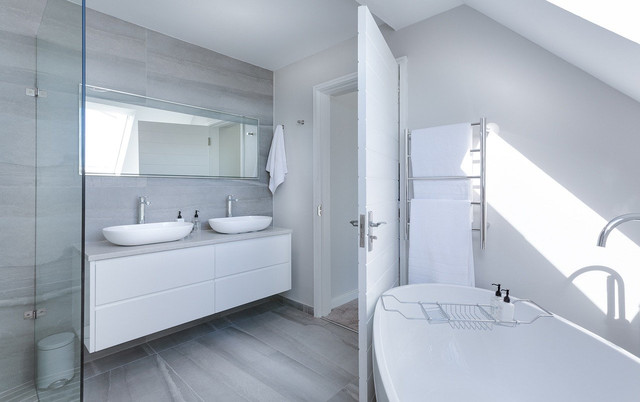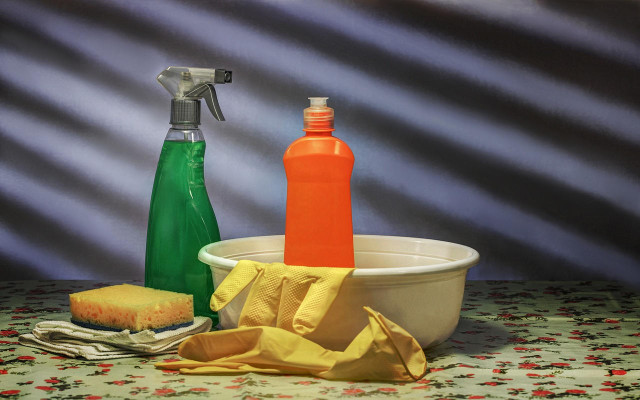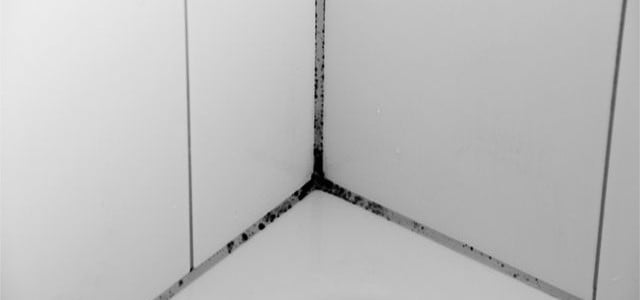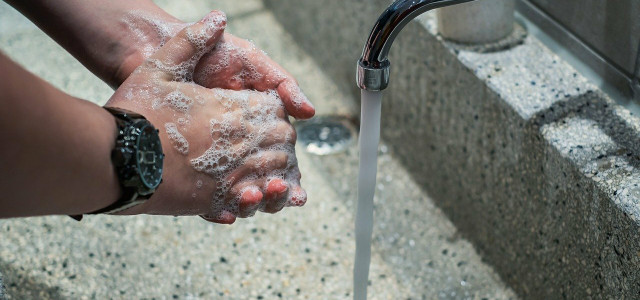Bathroom mold isn’t just unsightly – it can also be bad for your health. Here’s how you can remove black mold from your bathroom or shower, and how to avoid it in the first place.
It’s normal for the humidity in your bathroom to be high – but this humid atmosphere also allows mold spores to grow and thrive. The most common kind of bathroom mold is black mold. If you spot any black mold in your bathroom, you should remove it immediately. However, there are several kinds of dark-colored mold fungi, most of which are not harmful.
Still, any high concentration of spores in the air – which often happens quickly in enclosed spaces – can lead to allergies or asthma: The mold spores actually spread through the air itself. Also, mold can end up leaving dark, ugly stains. Reasons enough for wanting to avoid any black mold in your shower, or to remove it as soon as possible.
Preventing Black Mold in Your Bathroom

Bathroom mold can turn up almost anywhere: by a window, in the tile grout, in your shower’s door track, or on the walls. Follow our tips to help prevent black mold in your bathroom:
- Ventilate regularly: Fresh air is key. Open the bathroom window fully at least a couple of times a day for a few minutes. Air the whole room briefly but thoroughly, especially straight after showering. It’s not enough to just crack a window for a while – anyway, this is also a way to save conserve energy used to heat the room. Proper ventilation is very important if you want to prevent bathroom mold. If you don’t have a window in your bathroom or shower, no problem: Just make sure to leave the bathroom door open. Maybe there’s a window nearby which you can open too. A bathroom ventilator that keeps running after you’ve turned out the light will also help air your bathroom.
- Dehumidifiers: A dehumidifier extracts moisture from the atmosphere. You can install one in your bathroom to help prevent mold from taking hold. It doesn’t have to be one of those electric units, of course – you can get smaller, ambient dehumidifiers from the drugstore (or online on Amazon**, for example by Vivosun, Homelabs, or Ivation)
- Open your shower door: To prevent black mold in the shower, open the shower door so that your shower cabin can dry properly. If you have a shower curtain, don’t leave it all bunched up – it has to be able to dry, too.
- Wipe dry: After taking a shower or bath, you should at least dry off any excess water, be it on the shower fittings, the walls, or the tub itself. If you have a bathmat, it’s best to hang it up to dry.
- Squeegee: It can help to have a squeegee in the shower to clean it up quickly, especially for corners and gaps. You’ll help prevent black mold in your shower if you clean it regularly.
- Clean your grout: Mold really likes tile grout, which is why you should clean your tile grout thoroughly – ideally with all-natural homemade cleaners.
- Proper heating: If there’s a big difference between the temperature of your walls and the water you’re showering with, there’ll be more steam and more moisture. This is why it’s important to keep your bathroom at a steady temperature to prevent bathroom mold. You’ll still be more likely to need the heating on in the winter than in summer! Read on: Recommended Thermostat Temperature Settings for Winter
- Dry wet clothes elsewhere: To prevent black mold in your bathroom, let your wet towels dry in another room – just showering gives your bathroom enough humidity to deal with. You should, ideally, dry your laundry somewhere else too, although you’ll need to make sure the other rooms are also properly ventilated.
- Hygrometer: A hygrometer measures a room’s humidity, which can help you keep an eye on the air’s exact moisture levels. The humidity in your bathroom shouldn’t exceed 70% for any length of time. By the way: Air is actually less humid in winter.
Bathroom Mold Removal



If it’s already too late, and you’ve spotted some black mold in your bathroom, make sure to remove it quickly. Some tips to start with:
- It’s best to wear gloves to protect yourself from black mold spores. It’s often sensible to wear a face mask, too. If you have goggles, use them (especially for larger infestations). Afterward, you should change your clothes and take a shower.
- Children, pregnant women, and people with weak immune systems are better off leaving bathroom mold removal to somebody else.
- First, remove the mold with warm, soapy water. This will soak the surface layer and boost the effects of other cleaning agents.
- After removing the mold and cleaning the affected area, rinse it with plenty of water, then dry it thoroughly.
How do you remove bathroom mold?
- Useful tools: Use paper towels, or a sponge, and a brush. An old toothbrush is good for hard to reach spots. Also, a hand-towel is useful for drying the area after cleaning. Note: It’s best to use old materials because anything you can’t wash should be thrown away afterward. (You can wash the towel at 90°).
- Vinegar essence or white household vinegar: Vinegar is usually enough to remove bathroom mold – you can get it at a drugstore or supermarket, and it’s environmentally friendly and cost-effective. You can wash your clothes with vinegar too!
- Yeast: Another natural way to remove black mold from your bathroom is yeast. Dissolve some dried or fresh yeast in water – or use your own homemade yeast – then apply the mixture with a brush and let it go to work for ten minutes. You might have to repeat the process a couple times.
- Specialized cleaning agents (if necessary): With stubborn black bathroom mold, buy a specialized cleaning agent – or mix your own. Good options include hydrogen peroxide (two parts water, one part hydrogen peroxide), ethyl alcohol, or another high-proof alcohol (at least 70% ABV). Note: Avoid buying fungicides, which can be very harmful to your health. When buying aggressive cleaning agents, make sure the ingredients are as environmentally friendly as possible.
- Replace silicon grout: Black bathroom mold loves silicon grout – so you may end up having to replace it. To begin with though, here are some tips for cleaning tiles.
- Expert help: If you’re ever unsure about how to safely remove bathroom mold, just ask an expert for help, for example when choosing a cleaning agent. Larger infestations and older patches of mold should be removed by a specialist. If the mold keeps coming back, you should also go to a professional for advice.
This article has been translated from German to English by Will Tayler. You can read the original here: Schimmel im Bad: So vermeidest und entfernst du ihn
** Links to retailers marked with ** or underlined orange are partially partner links: If you buy here, you actively support Utopia.org, because we will receive a small part of the sales proceeds. More info.Do you like this post?







